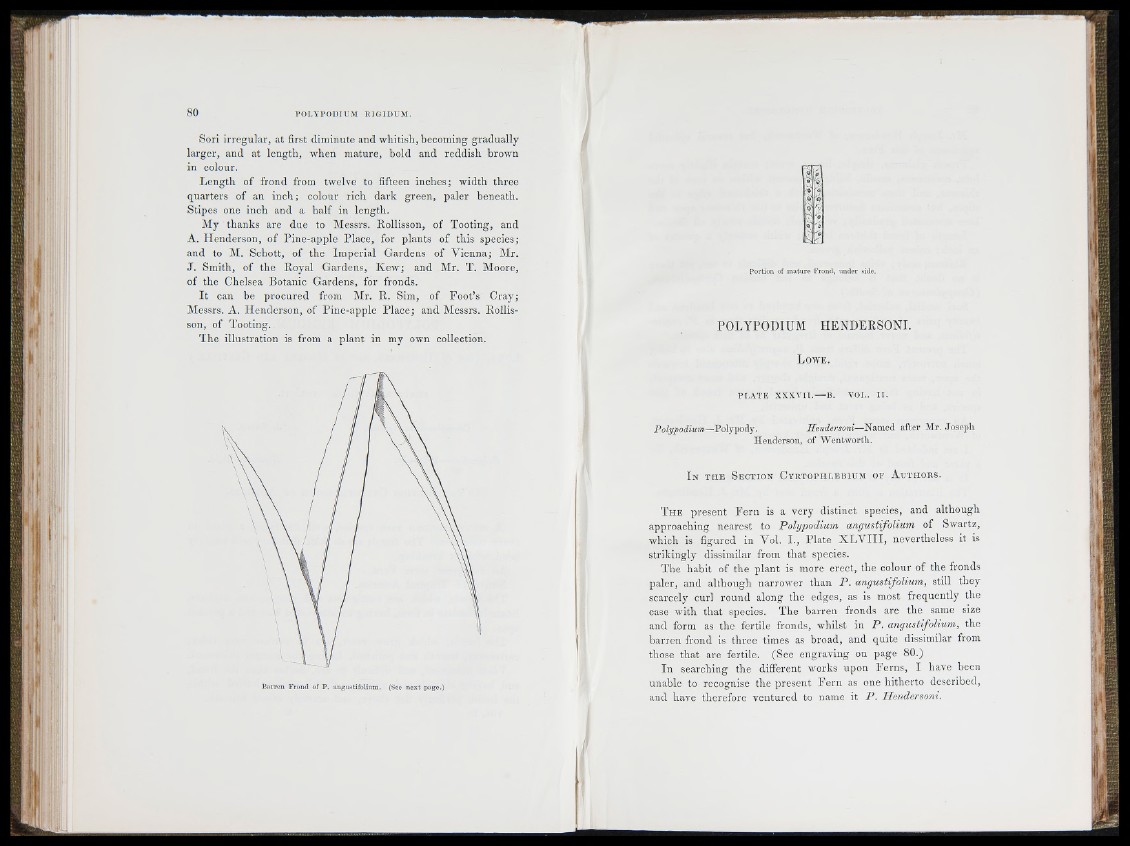
Sori irreg u la r, at first dimiiiute and whitish, becoming g radually
la rg e r, and at length, when mature, hold and reddish brown
in colour.
L en g th of frond from twelve to fifteen inches; width three
q uarte rs of an in c h ; colour rich dark green, paler beneath.
Stipes one inch and a half in length.
My thanks are due to Alessrs. Rollisson, of Tooting, and
A. Hen d e rso n , of P ine-apple Place, for plants of this species;
and to AI. Schott, of the Imp e ria l Gardens of V ien n a ; Air.
J . Smith, of the Royal Gardens, K ew ; and Air. T. Aloore,
of the Chelsea Botanic Gardens, for fronds.
I t can be pro cu red from Air. E . Sim, of F o o t’s C ray ;
Alessrs. A. H en derson, of Pin e -ap p le P la c e ; and Alessrs. Rollisson,
of Tooting.
T he illustration is from a plan t in my own collection.
¡V
e %
'&
a
Portion of maturp Frond, under side.
POLYPODIUM HENDERSONI.
L o w e .
P L A T E X X X V I I .— B. V O L . I I .
Polypodium—Voly'poAj. Hendersoni— 'S am e i after Mr. .Tosciih
Henderson, of Wen tw o rth .
I n t h e S e c t i o n C y r t o p h l b b i u m o f A u t h o r s .
T h e present F e rn is a very distinct species, and although
approaching nearest to Polypodium angustifoliuni of Swartz,
which is figured in Vol. I., Pla te X L V I I I , nevertheless it is
strikingly dissimilar from th a t species.
T he hab it of the plan t is more erect, the colour of the fronds
paler, and although narrower th an P . angiistifolium, still they
scarcely curl rou n d along the edges, as is most frequently the
case with th a t species. The b a rren fronds are the same size
and form as the fertile fronds, whilst in P . angustifolium, the
b arren frond is three times as broad, and quite dissimilar from
those th a t are fertile. (See engraving on page 80.)
In searching the different works upon F e rn s, I have been
unable to recognise the p resent F e rn as one hith e rto described,
and have therefore v en tu red to name it P . Hendersoni.